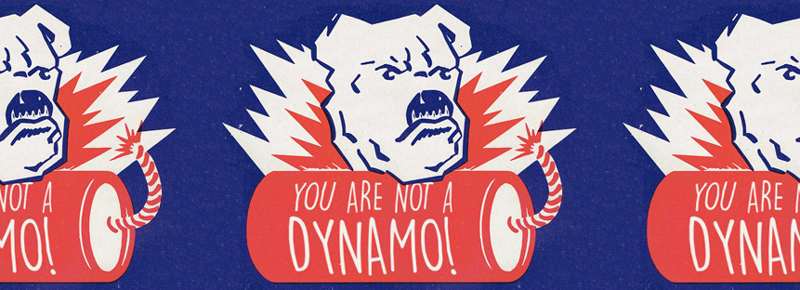Three Problems with the "New Science of Teamwork"

A few weeks ago, I was shopping at Whole Foods when I noticed the latest copy of Harvard Business Review. Splashed across the front page was, “The New Science of Teamwork.” Of course, I was intrigued. The entire issue was organized around the concept that there’s a “new” way of looking at teams and at people within the teams, and to my surprise, a lot of what was included in the issue really resonated with me.
I agree with the following comment: “Some managers just don’t recognize how profound the differences between their people are; others don’t know how to manage the gaps and tensions or understand the costs of not doing so. As a result, some of the best ideas go unheard or unrealized, and performance suffers” (p. 51). I also agree with the idea that most of what is out there now isn’t working. You may recall our recent survey that was conducted by a third party that discovered that, while 41.5% of companies are offering teamwork collaboration tools, 85% of respondents only use these tools sometimes, rarely or never.
1: The brain should be wired the same whether you’re at work or at home
Not unlike 5 Dynamics, this “new” methodology identifies four working styles, and they state, “[t]he four styles give leaders and their teams a common language for discussing similarities and differences in how people experience things and prefer to work” (p. 52). I can get on board with that. The “new” methodology, like 5 Dynamics, focuses on the way that your brain is wired, but we begin to diverge when they state that they have people take their questionnaire twice. People complete it once to look at your working style in your professional role and another time to look at your working style in your personal life (p. 62). That was puzzling to me, because if you are measuring the way that your brain is wired, do you really believe that your wiring shifts when we leave work?
2: The “new” working styles are prone to positive and negative perceptions
Another significant issue I have with the methodology is that it proclaims that “[m]ost top leaders are Pioneers or Drivers” (p. 54). If I were working for a company that gave me this questionnaire, I would do everything I could to show up as a Pioneer or Driver, and, based on what I have seen, gaming the system is possible. At 5 Dynamics, our data shows that your preferred working style does not indicate your ability to earn a spot at the top. What limits you is your lack of awareness around what you see readily and what you might miss. Our data shows that people can be successful with any working style as long as they are self-aware and build solid teams who support them by filling in the gaps. Successful leaders also make an effort to flex their muscles in their nonpreferred working styles. They realize that they have to compromise to get ahead and spend some time in areas of workflow where they have less energy.
I couldn’t help but be appalled by the treatment of the poor Guardians and Integrators: “Pay close attention to your sensitive Introverts” (p. 55). “People who are most introverted, most stressed, and least adaptable are often being led by those who are most extroverted, least stressed, and most adaptable” (p. 56). Would anyone want to be labeled a Guardian or an Integrator?
3: Leaders are blamed for team performance issues
The other group that didn’t fare well in this article were the leaders. They were blamed for not getting the performance from their teams when in reality even the most adept leader, who has a phenomenal grasp on the various working styles, can only go so far. We believe that we are all in this together. Collaboration isn’t a one way street. The entire team must be aware of what is happening within us and within others to move the needle on team performance.
Why 5 Dynamics is better for both employee and team productivity and satisfaction
At 5 Dynamics, we talk about people having high or low levels of energy in Explore, Excite, Examine, and Execute to describe where a person’s Energy flows easily and where it might get blocked. We do not use these terms to label you as we recognize that you have Energy in all four dynamics. You quickly move to areas where you have higher Energy, but you can certainly spend time in the areas of lesser Energy, as well. Most methodologies focus on where you get stuck, but we focus on where your Energy naturally flows.
Another key differentiator for 5 Dynamics is that we have an underlying method—the way you work. Using this method, employees consider their work as a process. Each task in the process is best done with a particular type of concentrated focus, as well as a way of perceiving that task. Certain behaviors and ways of thinking can lead to easy, successful outcomes. We call each of these types of focus demanded by the work “Dynamics.”
- Virtually all work can be described in five Dynamics: Explore, Excite, Examine, Execute, and Evaluate. For tasks and projects, these dynamics repeatedly appear in a sequence.
- Each individual innately invests himself or herself comfortably in certain Dynamics, and less easily in others. This differs from competence.
- “Energies” refer to people’s natural ease in spending time and focus in each Dynamic. Energies consist of one’s measured preferences for learning, perceiving, collaborating, and behaviorally working. These Energies correspond to the first four Dynamics: Explore, Excite, Examine, Execute.
- Before using the 5 Dynamics method, individuals measure their own Energies through a rigorous, but quick psychometric assessment that is delivered online.
- They then use the work-based process model to apply their own Energies, and those of others, to achieve the optimal external business results (“Success”) and their highest internal engagement (“Satisfaction”).
And employees actually enjoy the 5 Dynamics process. We’ve found that 5 Dynamics customers depart from the majority in their use of teamwork collaboration tools. While the survey mentioned above found that 85% of respondents only use these tools sometimes, rarely or never, 91.6% of 5 Dynamics customers surveyed use our tools regularly.
In conclusion, the “New Science of Teamwork” isn’t so new after all. Mike Sturm began his research on his methodology (which today is known as the 5 Dynamics methodology) over three decades ago. He refined it over a ten-year period and tested it on thousands of subjects. However, Mike was not a business man and he did not know how to bring his product to market, so for many years, 5 Dynamics was the best kept secret out there. The 5 Dynamics methodology began to spread through word of mouth because those who were lucky enough to be exposed to the 5 Dynamics Methodology loved it and couldn’t wait to share their secret with others. People like Doug Engelbart, a computer and internet pioneer, credited Mike with understanding his challenges as a visionary, as he had not always been well understood. Doug stated that Mike’s dimensional understanding of him meant a lot to him, and he quoted Mike often.
I am glad to see that others are beginning to realize that the predominant methodologies that are used today do not work and that we need something better. But the ‘something better’ has been around for 25 plus years now and several amazing companies are enjoying its power today.


